The Proton Saga – a nameplate that has been with the first national carmaker for more than three decades, and recognised as the first-ever national car. The one that started it all. It is a car that is familiar to almost every Malaysian, who have either been driven around in one, or have been behind the wheel of one themselves.
Having undergone two generational changes and numerous updates over the years, the Saga has always incorporated affordability into its DNA, accompanied by practicality and convenience. With the dawn of the third-generation Saga almost upon us, Proton has decided to head back to the drawing board to ensure the Saga continues to win the hearts of the masses.
The 2016 Saga (internally known as the P2-13A) will be the third introduction (after the new Persona and Perdana) in a four-model revamp from the company this year, and it’ll be its most important one yet. With tentative prices set between RM37,000 and RM46,000, this will be Proton’s volume seller – the company aims to shift up to 5,000 units per month.
That is by and far a lot more than the recently-introduced Persona, and thus, the new Saga has to hit all the right notes to pull in the crowd. More so now, especially when its market space has been invaded by Perodua’s first-ever sedan, the Bezza. So, can the new 2016 Proton Saga live up to its potential? That’s what we’re gonna find out.
The new Saga is available in four variants, all powered by a 1.3L VVT engine (same as on the Iriz, replacing the old IAFM+ unit) – Standard (MT), Standard (AT), Executive (AT) and Premium (AT). Ready? Let’s get to it.
We’ll start with the design, where Proton has decided to go with a mix of evolutionary and revolutionary, instead of the latter like the Saga’s larger siblings. It may share the same platform as the second-gen model – with the same 2,465 mm wheelbase – but break out the measuring tape, and you’ll find that the new car measures 4,331 mm long (+74 mm), 1,689 mm wide (+9 mm) and 1,491 mm tall (-11 mm).
The increase in length is primarily due to the longer front (+44 mm) and rear (+30 mm) overhangs, the result of the Saga’s new face and rear end. At the front, the lower apron shares a similar design to that on the new Persona, with the same “moustache-like” lower intake and isolated fog lamp enclosures. Proton says the three new sedans (Saga, Persona and Perdana) were all designed concurrently, leading to a strong family resemblance.
Moving upwards, the Saga’s familiar face remains instantly recognisable, but with a few minor tweaks. Firstly, the halogen headlamps have been reshaped to be a little more trapezoidal rather than the blade-like units on the second-gen model. Secondly, there is a new grille featuring two slats finished in chrome (new Proton logo in the centre) – reminiscent of the original 1985 Saga.
At the back, the car is unrecognisable from the previous model, featuring a more curvaceous design of the bootlid, which also sprouts a small lip. New two-piece, trapezoidal-shaped taillights (bulb type) replace the former corner-hugging LED units, joined by a centre trim piece with the company’s new logo. The rear lower apron also gets a blacked-out section hosting the mid-mounted rear fog lamp.
The new bootlid design (looks like the one on the Alfa Romeo Giulia) also results in a wider aperture to the cargo space, which has now expanded to 420 litres (+7 litres compared to before, but well under the Bezza’s 508-litre boot). Proton says the car is capable of swallowing up to two medium-sized and two small-sized luggage bags with no hassle (photo below).
The new car also gets a folding rear bench on all variants, something the previous model didn’t have (nor does the Persona Standard). Tipping the seat down reveals a small slot into the boot, which means the “expanded” cargo space will be limited in practicality. This curious arrangement is because the car’s skeleton includes the section behind the rear seat, so slicing it further for a bigger opening reduces rigidity.
Looking at the car head on, the contoured hood is another new addition to the car, with pair of lines, one of which flow towards the contours of the roof before fading away as it approaches the rear window. As for the profile, the C-pillar has been massaged out to form a gentle slope, less upright and extending further back than before. The car also appears to have a much larger and raised rear end as a result of this change.
The rear doors now fit a wider aperture due to the new C-pillar structure. From this view, and from many others, the car certainly appears a lot more proportionate and “normal” compared to the Persona, which is a good thing. Design is certainly a subjective matter, but this writer feels the new Saga appears “softer” than its predecessor, and is pretty easy on the eyes.
The total design overhaul (every body panel here is new) isn’t limited to just the exterior, as the cabin also gets a makeover. While the position of the air-con vents are unchanged, they are now redesigned to become rectangular outlets rather than circular units. What’s new, then? You can’t close the vents anymore.
As you can see below, the centre stack now incorporates the air-con vents and hosts the car’s double-DIN headunit slot, as well as the switchgear for the air-con (carried over from before), central locking, fog lamps, rear demister, parking sensors, hazard lights and Electronic Stability Control (ESC) – the latter is new for the budget sedan (albeit only on the Premium variant), and is a welcome addition, particularly as the Bezza already has it in top Advance spec.
The good news here is things appear much neater than before, and the flat section you see at the top of the stack is brilliant for those who need a spot to stick their handphone mounts (i.e. Grab/Uber/people who use mobile navigation apps).
Unfortunately, the position of the centre stack is a little too low, which makes reaching some of the controls a little awkward. Moving on, below the new centre stack is where you’ll find the 12 V power socket, along with a USB port and AUX input (for the headunit). These items are found on the headunit itself on lower trim levels with a single-DIN unit.
The centre console, meanwhile, hosts a more sensibly-sized gear lever (from the Iriz), housed within a slimmer oval enclosure than before, with different trim finishes depending on variant (gloss grey on the Premium). The stowage space around the handbrake remains, so you’ll still have space for the usual wallet, keys and smartphone. Just beyond that, there’s a pair of USB charging ports (standard on all variants), along with a spot to place the phone while it gets juiced up.
Borrowed bits from other Proton models include the new steering wheel lifted straight from the Exora/Preve/Suprima S, which looks a little oversized in a car this size, mainly due to the large centre boss. There’s also the rearview mirror from the Exora that features an integrated screen for the reverse camera (Premium only).
The instrument binnacle is also reshaped, and the graphics on the meters (similar to the Persona) have been revised to offer better readability. Shorter drivers may have their vision blocked by the protruding binnacle, but that can be helped by adjusting the seat height via a rotary dial.
The seats are upholstered in fabric for all trim levels, with plain black on the Standard, and patterned trim higher up. Rear passengers now sit more upright than before (it was a touch too reclined before), and thanks to the more scalloped rear section of the front seats, there’s slightly more knee room than before too, though no where near as much as the Bezza which is larger. The rear bench base is still a little short though; the gap under the front seats to tuck your feet is a little small, and just like the Persona, you don’t get proper rear headrests – only embedded ones.
Powering this new Saga is the same 1.3 litre VVT engine from the Iriz, which replaces the IAFM+ unit in the previous model. Here, the mill sits on three redesigned mounting points instead of four for better NVH, and outputs the same amount of power as before – 94 hp at 5,750 rpm and 120 Nm at 4,000 rpm – directed to the front wheels via a five-speed manual gearbox or a CVT automatic.
The latter is dubbed CVT2+, and is offered on the Standard, Executive and Premium. Proton claims it to be a major improvement over the Iriz’s unit (even more so over the Saga FLX), but we’ll get to that later. There’s also a five-speed manual but it is only available on the Standard.
This new powertrain combo sees a quicker 0-100 km/h time of 12.2 seconds (0.8 seconds quicker than before) for the MT, and 13.1 seconds (1.4 seconds faster) for the AT. Fuel economy also gets an improvement here, with Proton claiming 5.4 litres per 100 km (vs 6.0 l/100 km) on the MT and 5.6 l/100 km (vs 6.3 l/100 km) on the AT at 90 km/h – the 0.33 drag coefficient could be of help here as well. That’s 17.9 km/l at a constant cruise for the Saga 1.3 AT, while Perodua claims 22 km/l for the Bezza 1.3 Advance in the mixed driving ECE mode.
Proton also made improvements to the Saga’s chassis, with new dampers, springs and engine bay strut bar to ensure better handling and control, while maintaining comfort and stability. It has also lowered the steering ratio (16:1 vs 20:1), reduced steering effort (2.75 kgf vs 3.0 kgf), and introduced a steeper steering rack angle, allowing for a tighter turning radius (5.1 m vs of 5.3 m). Torsional rigidity also gets bumped to 12,000 Nm/deg from 10,000 Nm/deg previously.
Has any of these changes made a difference to on-road performance? In terms of handling, the new Saga is certainly an improvement over its predecessor, and as far as I can tell, gains an upper hand compared to its main rival, the Perodua Bezza.
Steering response here is good, and even without electrical assistance (it’s a hydraulic power steering setup), the revised ratio does help quicken the response a little. Combined with the uprated suspension setup, the Saga remains very stable at high speeds, even while pushing 140 km/h on the Proton test track’s embanked corners.
We first had a go in the base Standard, followed by the mid-tier Executive variant, and both proved to be pretty capable at speed, although the embankment portion of the track didn’t inspire the most confidence. Things were a lot better in the Premium, where the car’s ESC system dialled down the power when it felt things were getting a bit lairy.
One should take note that ESC (and hill hold assist) is only offered on the top-spec Premium variant, and won’t make its way into the Executive and Standard trims. Standard safety kit on all cars include dual airbags and Isofix child seat anchors (with top tether), enough to earn the Saga a four-star ASEAN NCAP crash safety rating on all models. Unfortunately, the base Standard misses out on ABS, EBD are BA – a jarring omission.
Away from the “not-your-everyday” corners, driving on a smooth track means it’s hard to ascertain how well the Saga will cope with our famed public roads, but for any minor undulations experienced during the preview, the car did well to soak everything up to ensure things remain comfortable whether you’re a driver or a passenger.
Getting up to speeds mentioned above is also a much better experience, as the Punch CVT unit does a better job of transmitting power from the capable VVT engine compared to the sluggish one on the Iriz. Better yet, it certainly makes less of a whine than before too. The engine features a retuned ECU to complement the CVT’s response, but it still isn’t the most brisk in terms of delivering acceleration. However, it’ll potter around at a respectable pace, so long as you don’t expect miracles.
Maintaining highway speeds (80 km/h and 110 km/h) didn’t see a significant amount of noise intrusion from the engine or CVT. However, one should plan their overtaking manoeuvres, because stomping on the accelerator results in a spike in rpm and engine noise, as to be expected of a CVT. As mentioned, though, the CVT2+ does ensure power gets delivered quicker now, so that’s a plus.
The lesson here is that hard acceleration isn’t rewarded by instant results, so it’s best to be progressive rather than sudden in your throttle applications. Those looking at rowing your own gears should know that the Getrag-sourced manual gearbox throw is a little long, and the shifter feels a little loose on our test car. Still, it does provide a more immediate access to the engine’s power. As for the brakes, the pedal feels a little “spongey” – a common Proton trait – with a bit more travel than necessary before anything happens.
Overall, NVH is pretty decent, save for the air-con compressor that becomes pretty audible when it kicks in, as well as bit of wind noise. Tyre roar is mostly absent on the Standard, thanks to the thicker rubber fitted on the 13-inch steel wheels, followed by the Executive on 14-inch alloys and finally, the Premium on 15s.
More comfortable and refined, the new Saga is big step forward for Proton. The company hopes to sell up to 5,000 cars a month following its introduction, with plans to export the model to right-hand drive ASEAN markets soon after.
Closer to home, though, the majority of the Saga’s target market is made up of young individuals looking to purchase their first car. As such, affordability, design, practicality, convenience and performance must be integrated into the new Saga.
Sitting at the entry level of the company’s range, the new Saga is priced at RM36,800 for the Standard manual variant and RM39,800 for the CVT. Moving up, the Executive CVT retails at RM42,800, while the Premium tops out at RM45,800. All prices are on-the-road inclusive of insurance and a five-year/150,000 km warranty, up from the old model’s three-year/100,000 km coverage.
The pricing could be enough to pull potential customers away from the Bezza from both ends of the range – the base model has a four-cylinder, 1.3 litre engine compared to the 1.0 litre three-pot Perodua offers, while the top-spec Saga Premium with the all-important ESC is a fair bit more affordable than the equivalent Bezza Advance (RM51k).
All variants, meanwhile, have a sizeable advantage over Perodua’s sedan when it comes to ride and handling – it’s always hard to fault Proton in this department, and this one is no different. Pair all that with the significant improvements introduced across the board, and Proton appears to have its head back in the game.
So folks, the much improved 2016 Proton Saga. Yay or nay?
Here’s the variant breakdown in detail:
Proton Saga 1.3L Standard – RM36,800 (MT), RM39,800 (CVT)
- 1.3 litre VVT engine
- 94 hp at 5,750 rpm, 120 Nm at 4,000 rpm
- ECO Drive Assist
- Reflector halogen headlamps
- Rear fog lamp
- Front and rear parking sensors
- 13-inch steel wheels (with 175/70R13 Silverstone Synergy M3 tyres)
- Unpainted side mirrors, door handles and rear garnish
- Manually-adjustable side mirrors
- Body-coloured B-pillars
- Black interior
- Tilt-adjustable steering wheel
- Single-DIN headunit with Bluetooth, USB and AUX input, two speakers
- USB charging ports
- Fabric seats – plain black upholstery
- Height-adjustable driver’s seat
- 420-litre boot with space saver spare tyre
- Folding rear bench seat
- ISOFIX child seat anchors with top tether
- Two airbags
- Front disc brakes, rear drums
Proton Saga 1.3L Executive CVT – RM42,800
- Adds on:
- Front fog lamps
- 14-inch snowflake Y-spoke alloy wheels (with 185/60R14 Silverstone Kruizer1 NS800 tyres)
- Body-coloured side mirrors, door handles and rear garnish
- Power-adjustable side mirrors
- Black B-pillars
- Rear bootlid spoiler
- Gloss grey trim on outer air-con vents and steering wheel
- Single-DIN headunit with Bluetooth, USB and AUX input, four speakers
- Fabric seats – mesh pattern upholstery
- Front seat back pockets
- ABS with EBD and BA
2016 Proton Saga 1.3L Premium CVT – RM45,800
- Adds on:
- 15-inch turbine split-spoke alloy wheels (with 185/55R15 Silverstone Kruizer1 NS800 tyres)
- Electronic Stability Control (ESC)
- Hill-hold assist
- Double-DIN headunit with Bluetooth, USB and AUX input, four speakers
- Reverse camera (with integrated rear-view mirror display)
- Steering wheel audio controls
- Gloss grey trim on gear lever and surrounds
- Fabric seats – wavy pattern upholstery
All models get these improvements:
- 1.3 VVT engine (replaces IAFM+)
- Manual performance – 0-100 km/h in 12.2 seconds (from 13.0 secs)
- Manual economy – 5.4 l/100 km at 90 km/h (from 6.0 l/100 km)
- CVT performance – 0-100 km/h in 13.1 seconds (from 14.5 secs)
- CVT economy – 5.6 l/100 km at 90 km/h (from 6.3 l/100 km)
- Three-point engine mounts for better refinement
- Retuned ECU for better CVT throttle response
- Improved ride and handling package
- Tyres with lower rolling resistance, better wet grip (quieter by 2 dB)
- Four-star ASEAN NCAP crash safety rating (from three-star)
- Quicker, more direct steering rack (16:1 ratio, from 20:1)
- Tighter turning radius (5.1 m, from 5.3 m)
- Lighter door closing effort (15 kgf, from 25 kgf)
- Lighter steering effort (2.75 kgf, from 3.0 kgf)
- Improved torsional stiffness (12,000 Nm/deg, from 10,000 Nm/deg)
Browse full specifications and equipment of the 2016 Proton Saga at CarBase.my.
GALLERY: 2016 Proton Saga 1.3L Premium
GALLERY: 2016 Proton Saga 1.3L Executive
GALLERY: 2016 Proton Saga 1.3L Standard
AD: Drive the Proton model of your dreams. Submit your details and Proton PJ will get in touch with you.
Looking to sell your car? Sell it with Carro.

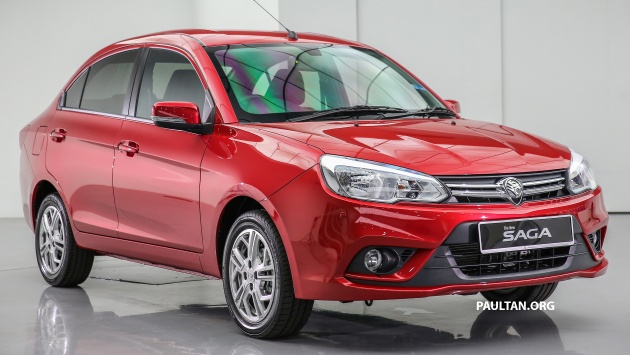
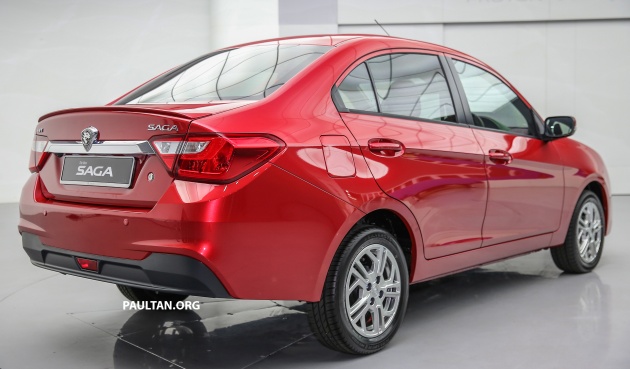






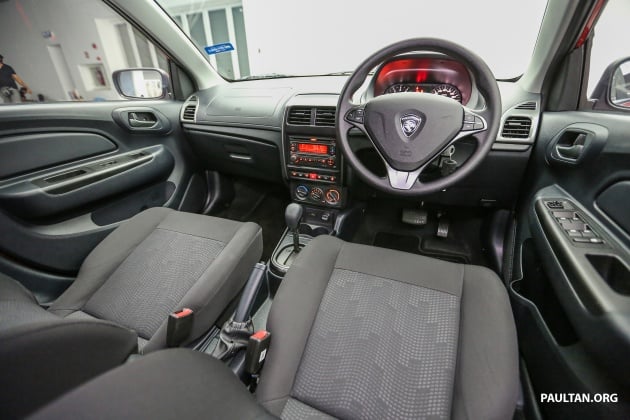







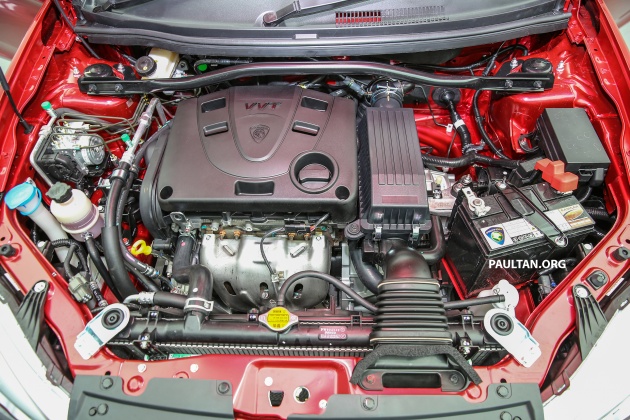








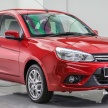
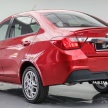
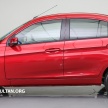
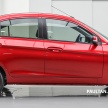
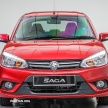
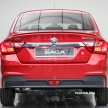

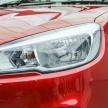
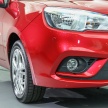
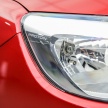
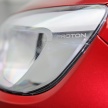
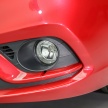
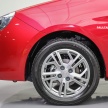
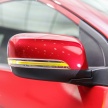
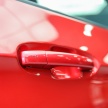
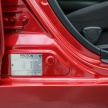
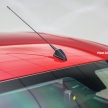
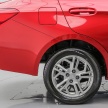
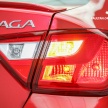
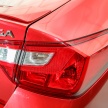
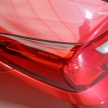
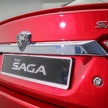
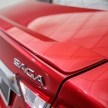
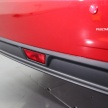
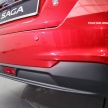
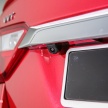
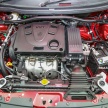
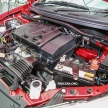
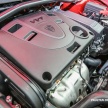
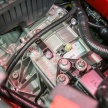
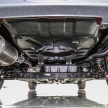
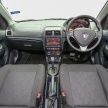
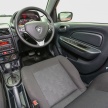
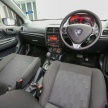
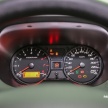
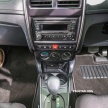
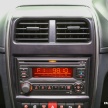
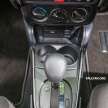

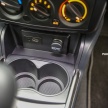
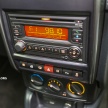
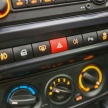
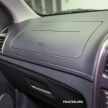
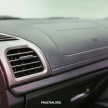
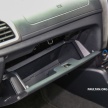
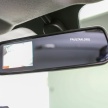
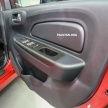
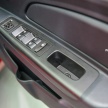
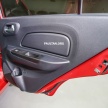
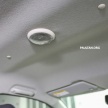
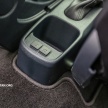
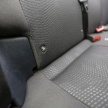
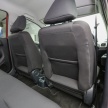
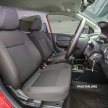
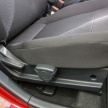
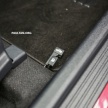
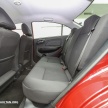
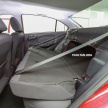
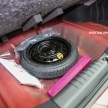

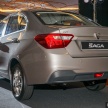
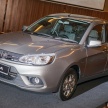
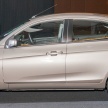
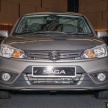
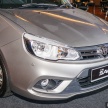
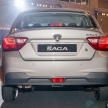
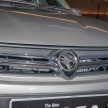
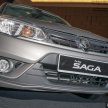
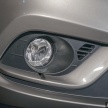
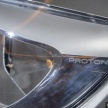
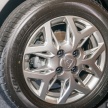
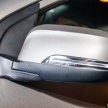
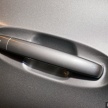
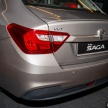
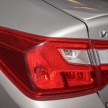

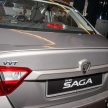

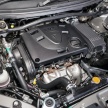
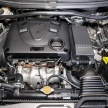
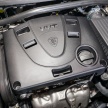
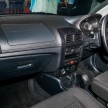
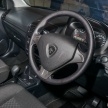
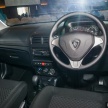
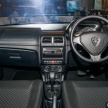
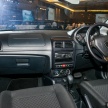
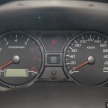
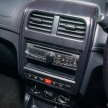
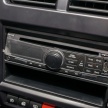
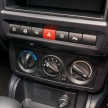
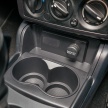
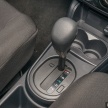
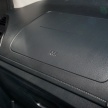
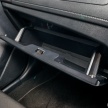
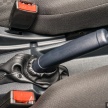

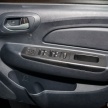
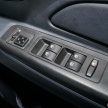
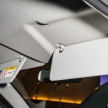
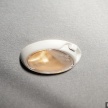
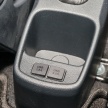
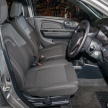
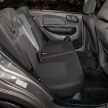
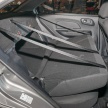
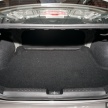
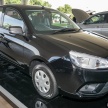
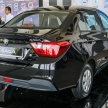
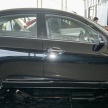
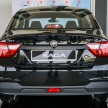
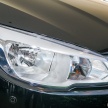
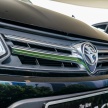
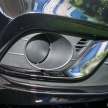
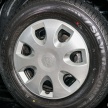
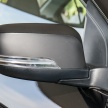
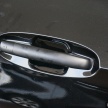
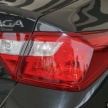
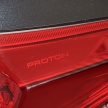
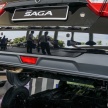

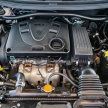
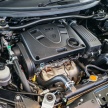
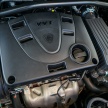
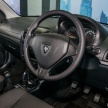
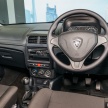
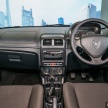
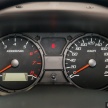
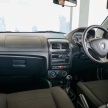
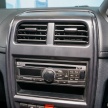
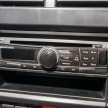
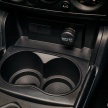
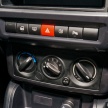

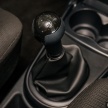
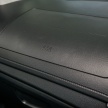
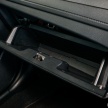
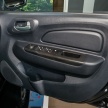
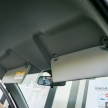
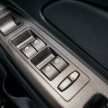
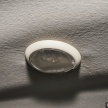
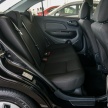


















AI-generated Summary ✨
Comments on the Proton Saga 2016 highlight significant improvements in NVH, handling, and interior design, with many owners expressing pride and satisfaction, especially with the premium variant. Critics point out the outdated platform, lack of safety features like ABS in base models, and the old engine. Some users compare it unfavorably to Perodua Bezza, citing fuel efficiency and safety omissions, while others praise Proton's progress. Many emphasize the importance of safety features and express disappointment over their absence in lower trims. The comments also reflect a mix of optimism and skepticism, with some fans defending Proton's efforts and others urging the company to upgrade safety standards and modernize further. Overall, sentiments are cautiously optimistic but acknowledge room for improvement.